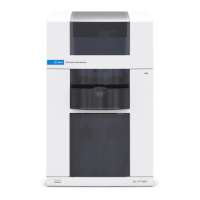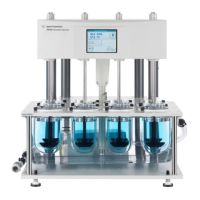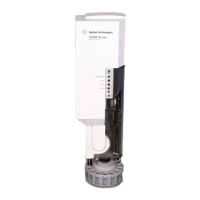76 Operation Manual
4 Operating in Chemical Ionization (CI) Mode
High Vacuum Pressure in CI Mode
High Vacuum Pressure in CI Mode
The largest influences on operating pressure in CI mode are the
reagent and collision cell gas flows. Table 6 lists typical
pressures for various reagent gas flows, depending upon the
collision cell gas flowrate. Familiarize yourself with the
measurements on your system under operating conditions and
watch for changes that may indicate a vacuum or gas flow
problem. Measurements will vary by as much as 30% from one
MS to the next.
Analyzer vacuum with reagent gas flowing
Note that the mass flow controller (MFC) is calibrated for
methane and the vacuum gauge is calibrated for nitrogen, so
these measurements are not accurate, but are intended as a
guide to typical observed readings (Table 6). They were taken
with the following set of conditions. Note that these are typical
PCI temperatures:
Source temperature 300 °C
Quad temperature 150 °C
Interface temperature 280 °C to 320 °C
Helium carrier gas flow 1 mL/min
Table 6 Typical analyzer vacuum with reagent gas flow
Collision cell gas flow on
N2 = 1.5 mL/min
Collision cell gas flow off
MFC (%) Rough vac High vac Rough vac High vac
10 1.77
×10
–1
7.15 ×10
–5
1.33 ×10
–1
2.56 ×10
–6
15 1.86 ×10
–1
7.19 ×10
–5
1.43 ×10
–1
3.00 ×10
–6
20 1.94 ×10
–1
7.23 ×10
–5
1.53 ×10
–1
3.45 ×10
–6
25 2.02 ×10
–1
7.27 ×10
–5
1.63 ×10
–1
3.86 ×10
–6
